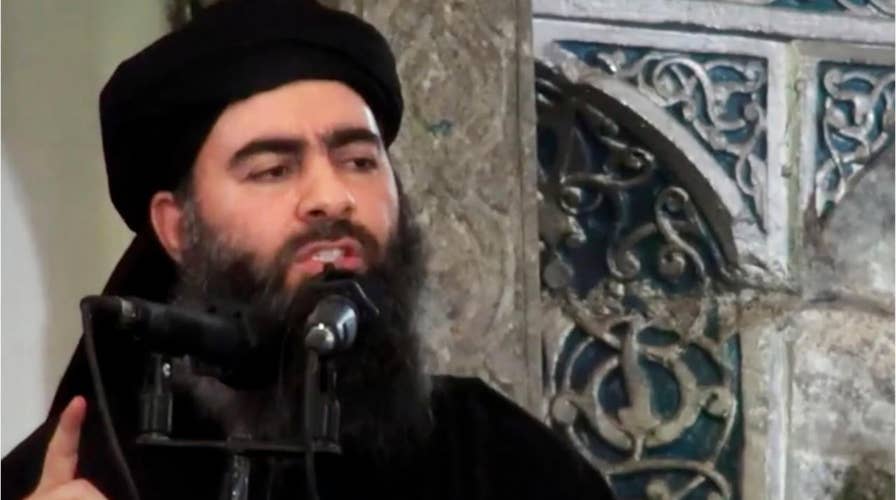As the once-powerful Islamic State (ISIS) crumbles, and its desperate fighters make a last stand in its final enclave surrounded by U.S.-backed coalition forces, its ideological leader is nowhere to be found.
ISIS militants who have surrendered to coalition forces believe that Abu Bakr al-Baghdadi has abandoned the struggle when his leadership is needed most.
His absence is causing deep fissures within the crumbling terrorist organization, which, though eroded, still boasts between 28,000 and 32,000 soldiers.
“He’s hiding somewhere, people were angry,” Mohammed Ali, an ISIS fighter from Canada who was captured by the U.S.-backed Kurdish-dominated Syrian Democratic Forces, told The Sunday Times.
The ideological appeal of ISIS and Islamic extremism remains, but Baghdadi’s leadership vacuum and the receding territorial losses of what’s left of ISIS holdings in Syria diminish the influence of the once-powerful organization.
WHERE IS BAGHDADI? INSIDE THE HUNT FOR THE ELUSIVE ISIS LEADER, THE WORLD'S MOST WANTED MAN
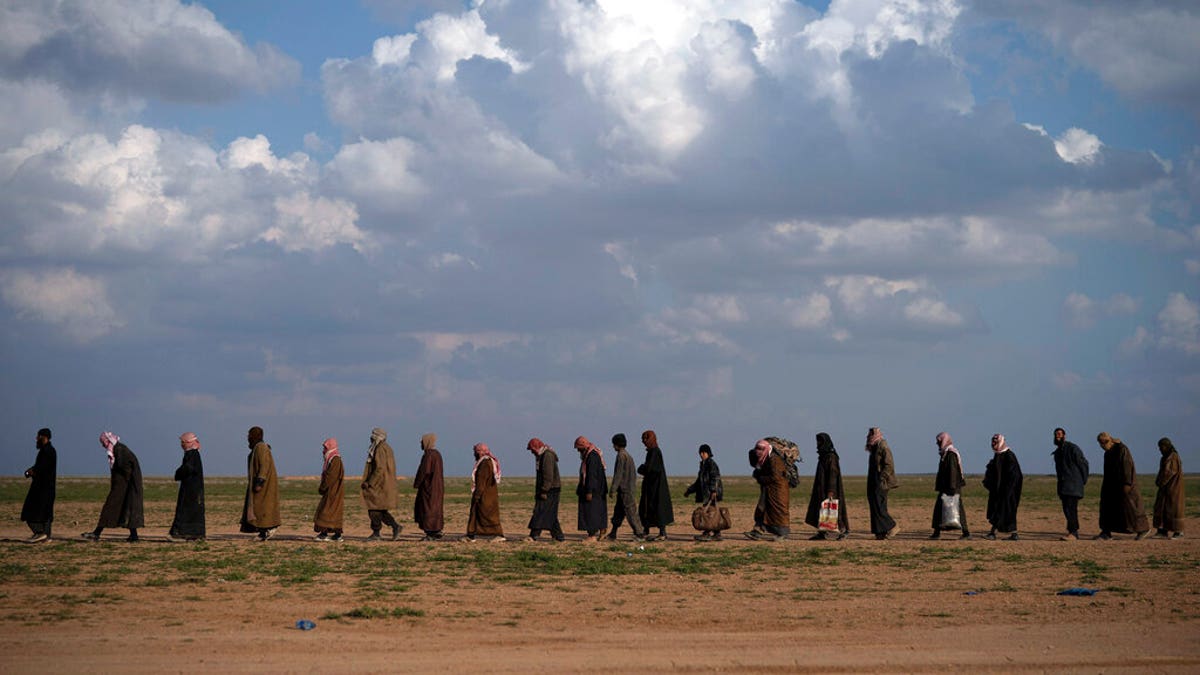
In this Friday, Feb. 22 file photo, men walk to be screened after being evacuated out of the last territory held by Islamic State group militants, near Baghouz, eastern Syria (AP)
Ongoing rumors of Baghdadi’s death have persisted, but he is most likely still alive. The United States is offering up to $25 million for any credible information that leads to his capture. Baghdadi also suffers from diabetes, high blood pressure and injuries sustained during an airstrike years ago.
“Iraqi intelligence is following Baghdadi and we believe he never stays in one place for more than one day,” Abu Ali al-Basri, director general of Iraq’s intelligence office at the Ministry of Interior, told Fox News. “We have information he still moved from towns in Syria and entered the Iraq border through Anbar (province) with movement to bordering Salahuddin (province).
Although Baghdadi remains far from the battlefield, he has continued to urge his loyal and ardent followers to carry on the fight. His most recent call to arms was in a series of audio clips released in August 2018.
Prior to resurfacing in August 2018, Baghdadi had not been heard from in nearly a year.
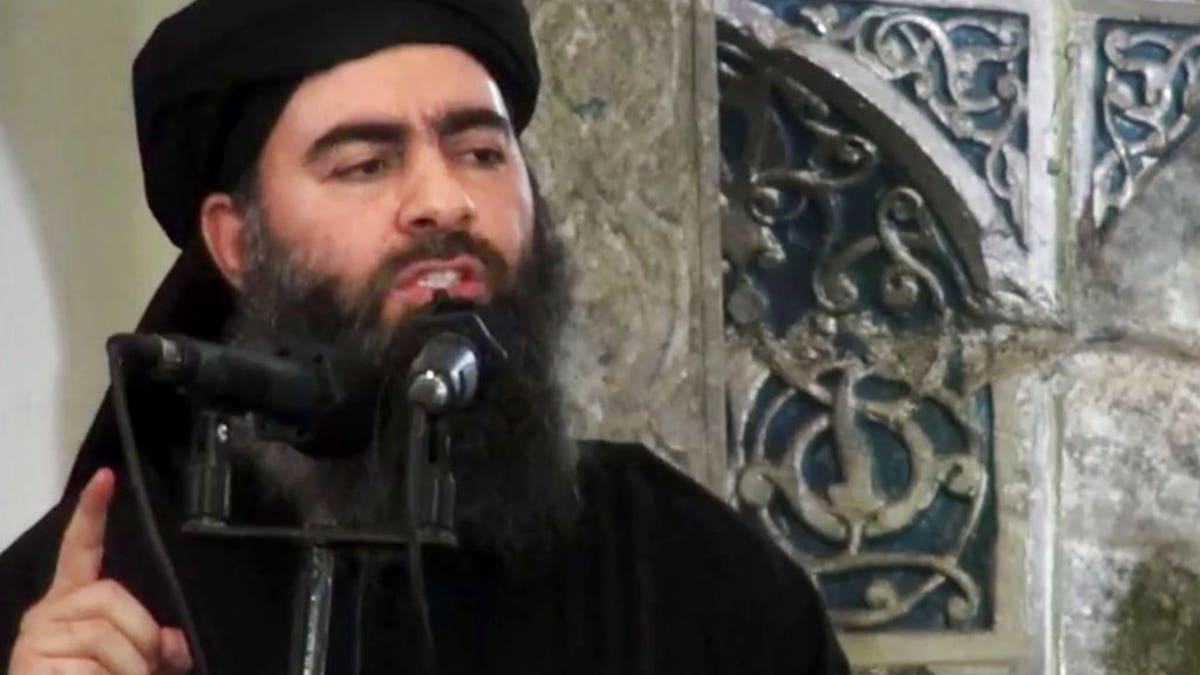
Ongoing rumors of Baghdadi’s death have persisted, but he is most likely still alive. The United States is offering up to $25 million for any credible information that leads to his capture. Baghdadi also suffers from diabetes, high blood pressure and injuries sustained during an airstrike years ago. (AP)
At its peak, the Islamic State ruled a vast swath of ungoverned space across Syria and Iraq, ruling a population of more than eight million people. Baghdadi’s stewardship of the caliphate was crucial to its governance structure, and his lofty jihadist rhetoric provided the inspiration necessary to draw in the hundreds of thousands of foreign fighters who joined the terrorist group.
Without the spiritual and operational direction of Baghdadi, and the Islamic State’s ability to govern, which was a primary driver of its appeal and what set it apart from other terrorist groups such as Al Qaeda, the group’s future remains unknown.
Terrorist groups rely on an ideological foundation to justify their entire existence and a charismatic leader is critical to motivating their rank-and-file membership to fulfill ISIS' ultimate and violent goals.

A man is frisked by a U.S.-backed Syrian Democratic Forces (SDF) fighter after being evacuated out of the last territory held by Islamic State militants, near Baghouz, eastern Syria. (AP)
Just like managing any organization, emphasizing the people and ensuring their support is essential. By appearing absent from the battlefield at the most critical moments, Baghdadi seems to have failed his zealous supporters.
Max Abrahms, professor of political science at Northeastern University and author of the book "Rules for Rebels: The Science of Victory in Militant History," says Baghdadi’s disappearance will not alter the group’s violent nature.
MASS GRAVE WITH DOZENS OF DECAPITATED BODIES FOUND IN LAST ISIS ENCLAVE: 'THEY WERE SLAUGHTERED'
“Removing Baghdadi will not affect the group’s tactics," he said. "He was like a CEO who is so incompetent that his removal would have no effect on the group’s violent performance.”
Leadership decapitation, or simply the absence of the leader, can have a disruptive or discouraging impact on the subordinates who are left to face their possible demise. But this doesn’t make them any less violent or threatening.
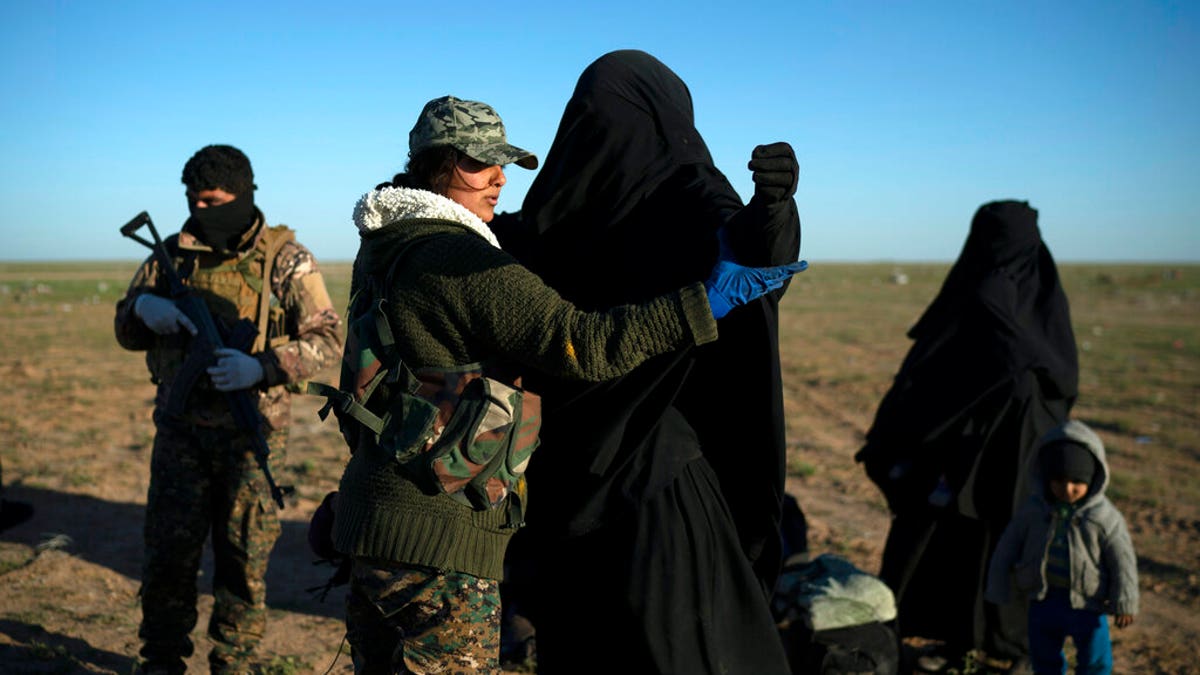
In this March 1 file photo, a woman is frisked by a U.S.-backed Syrian Democratic Forces (SDF) fighter at a screening area after being evacuated out of the last territory held by Islamic State group militants, in the desert outside Baghouz, Syria. (AP)
The caliphate in name may be gone, yet thousands of fighters are left; they've been forced to go underground and adopt an asymmetric form of warfare.
Terrorist attacks such as the Jan. 17 suicide bombing in Manbij, Syria, where four Americans were killed, are indicative of the dangers still posed by a fractured and dispersed ISIS.
CONVOY OF CIVILIANS LEAVES LAST ISIS VILLAGE IN SYRIA
And while many former ISIS fighters are returning home, many are also going to different locations around the world to continue the cause, including Libya, Afghanistan, Yemen, Nigeria, and Egypt’s Sinai Peninsula.
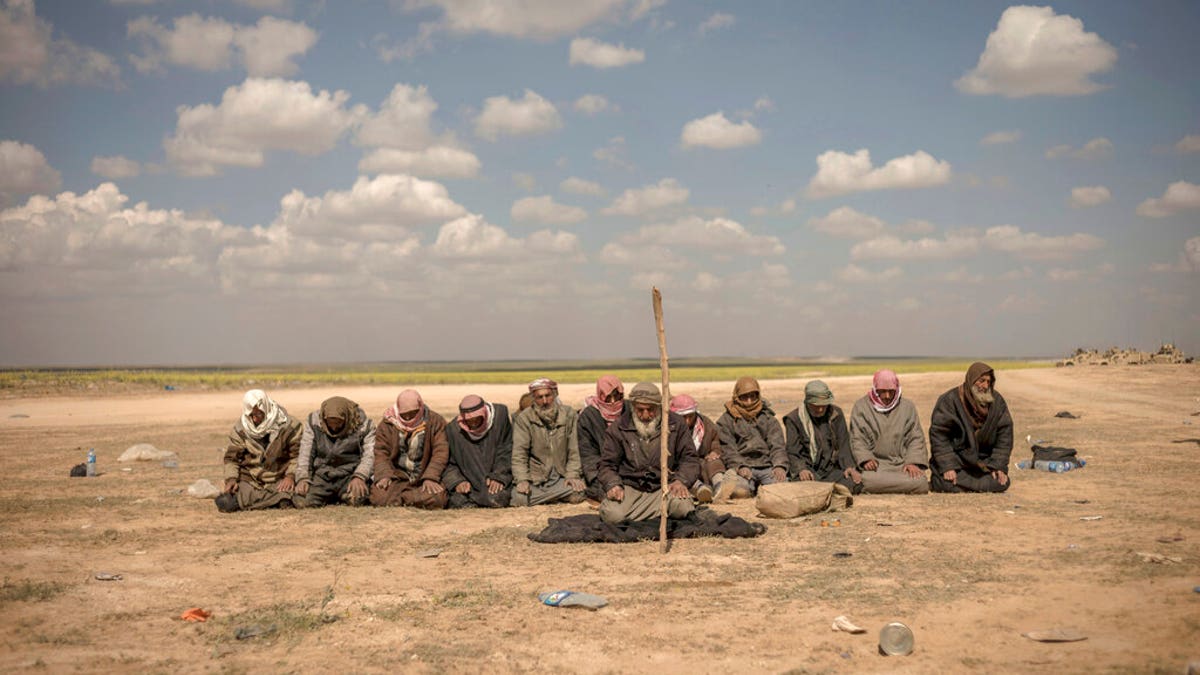
In this Wednesday photo, men pray at a reception area for people evacuated from the last shred of territory held by Islamic State militants, outside Baghouz, Syria. (AP)
ISIS will continue to exist in some capacity in Syria, as the Assad regimes brutality and repression will fuel further violent extremism and encourage Sunni resistance. Assad may have regained control of most of the country, but the conditions that led to the rise of ISIS have not been addressed and the dismal social and economic situation in a fragmented Syria are likely to be a driver for future mobilization.
Despite President Trump’s January 2019 declaration that ISIS has been defeated and his announcement that U.S. troops will be gradually withdrawn from Syria, ISIS and the ideology that feeds its hate will continue to be a resilient and formidable threat.
CLICK HERE FOR THE FOX NEWS APP
Chris Massaro is a researcher for Fox News, specializing in International Relations




















